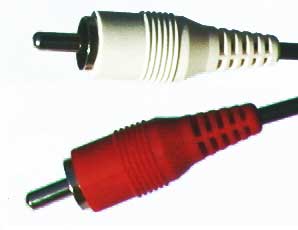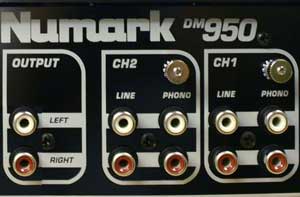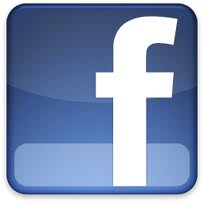Connecting Gear
How to connect it all, so you can hear music!
This stuff is covered a lot fuller in the book!
Chatper 11 of the book is dedicated to setting up, connecting, and troubleshooting connections
Ok, this is just a tiny little page to touch on how to connect kit together. It really is very simple, so I'll keep it short. The book has a bit more in depth info about each of the connections, and goes through various different options of connecting what to what. But, if you follow the basic princinples below, you'll be fine
The one thing I do want to add in here is a proper video about how to properly set up your tonearm. Please check back once in a while, and it'll be up here soon
Phono cables - colours and connections
Unless your equipment has digital connections, it's likely that everything you have will be connected using RCA plugs (RCA plugs are often called Phono plugs, but to avoid confusing with the phono input on the back of a mixer, I'll carry on calling them RCA).
If you look at the pictures below, the first one is of a pair of RCA plugs. The second one is the back of a (very basic) mixer. Notice how the plugs, and the connections on the mixer are coloured. It's simple - plug the red RCA plug into the red connection on the back of the mixer.


Connecting Turntables
Turntables are unique in their connection in two ways. The first is that they are the only items you'll ever connect to the PHONO input on the back of the mixer (take another look at the picture above, notice how both CH1 and CH2 have a PHONO and a LINE connection). Also notice that above the word PHONO, there's a silver screw. This is a GROUND connection, and is the other reason that turntables are unique, as they're the only piece of equipment that utilises that too.
Most mixers have just a single screw for the ground connection, rather than one for each channel, but it's really important that you connect the thin wire that comes out of the turntable to this screw. Otherwise, you'll get a deep humming sound, and some static pops and crackles.
The last thing to do is look at the controls on the mixer. There will be a switch on it which says "Line/Phono". If you switch this to one side, it will select the PHONO input on for that channel (which you will have plugged your turntable into) - and the other side will be for LINE inputs (which I'll explain next). Switch this switch to PHONO for both of the channels that you've connected your turntables to. And that's it - your turntables are now connected

